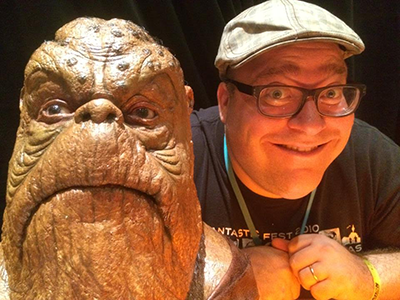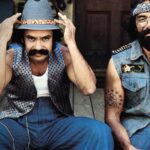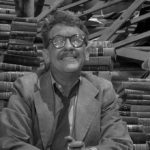Here’s a guy we talked about a lot in college. “The decisive moment.” What’s so weird (well, not THAT weird) is that just this past Sunday Ann & I saw the awesome exhibit at the Museum of the City of New York on the Magnum Agency’s of which H C-B was a member. I couldn’t get over that all of the work (all of the fucking awesome work, I should say) credited to H C-B has his years listed as “1908- ” Did this mean he was still alive? Nah. . .must be a typo. Anyway, here is the AP obit.
Photographer Henri Cartier-Bresson dies
By JOCELYN GECKER
Associated Press
PARIS – Henri Cartier-Bresson, the Frenchman whose early dabblings with a Brownie box camera blossomed into celebrated lifetime of traveling the world to capture the human drama on film, has died at age 95.
From Mahatma Gandhi’s funeral to portraits of William Faulkner or Chinese revolutionaries, Cartier-Bresson was a pioneer in photojournalism whose pictures defined the mid-20th century and inspired generations of photographers. Yet he was famously averse to having his own picture taken and in later years turned away from photography to the love of his youth, painting.
A statement from his family and Magnum, the photo agency that Cartier-Bresson co-founded, said he died Tuesday morning at his home in the southwestern Luberon region, and funeral services were held privately Wednesday in the nearby Alpes-de-Haute-Provence region. A memorial service is planned for early September, it said.
“The world of photojournalism has lost its soul,” Goksin Sipahioglu, the founder of Sipa photo agency, told France-Info radio.
Gary Knight, managing director of VII, another photo agency, said Cartier-Bresson “defined photography at that crucial period when small cameras were coming into fashion and its entire nature was changing.”
Cartier-Bresson disdained artificial settings and said photographers should shoot accurately and quickly, seeking “the decisive moment” when the ultimate significance of a given situation is laid bare. He shot with a Leica, the quietest of cameras, working only with black and white film, and notably, without a flash. Limelight, he said, was a sure way to destroy a subject.
To make the camera as unobtrusive as the human eye, he went so far as to tape over its silvery parts in black and would keep it hidden under a handkerchief until the critical moment. The aim was always to capture something of his subject’s inner essence – to pinpoint “a relationship between the eye and the heart.”
“With the one eye that is closed, one looks within, with the other eye that is open, one looks without,” he once said in a rare interview.
Most of his international fame was generated from publication in leading magazines like Life, Vogue and Harper’s Bazaar, and prestigious exhibitions, notably a 1947 one-man exhibition at New York’s Museum of Modern Art.
He was also fascinated by cinema, assisting French director Jean Renoir on the classic “The Rules of the Game” and making two notable documentaries of his own – one about medical aid to the loyalists in the Spanish Civil War and another about French prisoners of war returning home at the end of World War II.
Cartier-Bresson was born Aug. 22, 1908, in Chanteloup outside Paris to a wealthy textile family.
The eldest of three children, he was interested mainly in painting. At 20, he turned his back on the lucrative family business to study art.
In 1930, with a box camera, he started dabbling in photography. Two years later, armed with his Leica, he traveled around Europe and West Africa, published photos in magazines and had his first exhibition in Madrid in 1933.
Critics said his most brilliant photograph was “Behind the Gare Saint-Lazare,” of a man leaping over a puddle and frozen in mid-air, his V-shaped shadow contrasting with the fence above the railroad tracks.
“Rue Mouffetard,” a poignant shot of a grinning youngster carrying two bottles of wine down the Left Bank market street, became one of Cartier-Bresson’s most sought-after photos.
At the outbreak of World War II, he was a corporal in a film and photo unit and was quickly taken prisoner. After nearly three years he escaped and made his way back to Paris where he divided his time between commercial photography and transporting ex-prisoners for the French underground.
His pictures emerged as a stunning reportage of the underground resistance and the political drama of postwar Europe. In 1945, under the aegis of the U.S. Office of War Information, Cartier-Bresson directed “The Return,” a highly praised documentary on homecoming French POWS.
In 1947, he joined two of the other pre-eminent photographers of the time, Robert Capa and David Seymour, in founding Magnum, a ground-breaking photo agency.
He continued to photograph, but turned away from the camera in the last 25 years of his life to rediscover painting. By 1988, he was spending most days sketching in pencil or charcoal at his Paris home or at his retreat in southern France.
In 1937, Cartier-Bresson married a Javanese dancer, Ratna Mohini. He is survived by Martine Franck, whom he married in 1970, and their daughter, Melanie.







